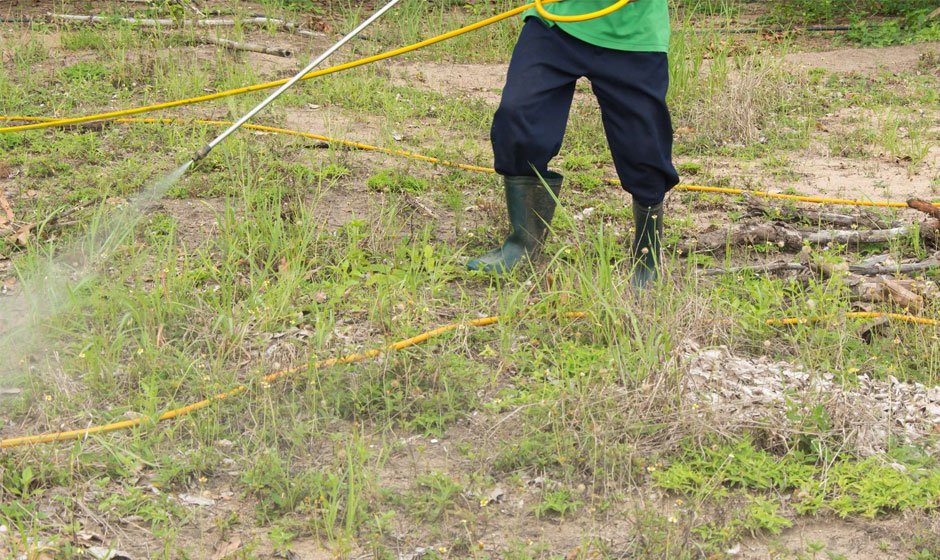If you’re looking to ward off annual weeds, you need a systemic weed killer that will reach the root of the plant. While residual weed killers do that, there’s more to knowing which herbicides and soils get along. Soil pH level and herbicide makeup work together to make or break vegetation and greenery.
Herbicides are not compatible with every soil type. For instance, Atrazine is a corn herbicide that is incompatible with coarse soils as it maintains its potency despite soil moisture. However, some soils are more accommodating to chemical weed killers.
Soils that accommodate chemical weed killers may be more likely to move with water, destroying crops and contaminating groundwater. Below, we discuss the science of choosing the right lawn weed killer for your soil. Read on to learn more.
Soil type influences lawn weed killer interactions.
By understanding the science between soil type and herbicides, you can identify the possible relationships between them to decide which pairings will be most effective at controlling your weeds.
The science boils down to this:
- Soil pHdirectly influences herbicide efficiency. The pH measures the acidic vs. alkaline nature of the soil, starting from 0 to 14. According to the pH scale, the ideal pH for crop production is between 5 and 7.
- If an herbicide mixes with a soil pH greater than 7.4, it could decrease hydrolysis, which is the process required to break down the herbicide. This means herbicides may be more likely to hinder crop production.
Soil type influences herbicide effectiveness.
Just as herbicides influence soil pH, soil type can affect how effectively the herbicides function. For example, depending on the soil type, the herbicide may not reach the weeds it was created to destroy. Here’s how:
- Adsorption and adsorptionrelease the applied herbicide.
- If a plant is unable to absorb the herbicide molecule, or the molecules of the herbicide cannot bind to the soil particle surfaces, the chemical products in the lawn weed killer may spill into the next season.
- The interaction between the soil and the application of the lawn weed killer directly influences whether the herbicide reaches the plant’s roots and eliminates the weeds.
Check the product labels before applying.
To ensure you find the right lawn weed killer for your soil, always check the labels. The labels will inform you of the herbicides best suited for different types of soils. You can also select from pre-emergent and post-emergent herbicides using label references.
Choosing between which herbicides or lawn weed killer products to use is easier when you know which soil you have. If you are having difficulty controlling your weeds, it is likely a soil-related issue. To resolve this, verify the pH of your soil using a soil testing kit.
Your soil type is more impactful than the herbicide you use.
The chemical makeup of herbicides usually has a less influential role in performance than the soil type. The soil type (coarse, medium, fine, and organic) and the environment will directly impact the effectiveness of your lawn weed killer.
Identify the herbicides you need by soil type.
- After you’ve identified the type of soil you have, the next step is to identify the herbicides that correlate with your soil type.
- Then, you’ll determine the soil type to rate applied based on the Cation Exchange Capacity(CEC).
- Herbicide product labels will indicate the general application rates per soil type.The rates are typically proportional to CEC values.
Use the following chart to determine which lawn weed killer you need. This chart is established from research compiled by Michigan State University.
Estimated Soil Texture: Soil Type: CEC Ranges
| Soil Textures | Types Of Soils | CEC Range Est. |
| Fine | Silty Clay Loams, Silty Clays, Clay Loams, Clays
|
20-25 and up |
| Coarse | Sands | 1-5 (light)
5-10 (dark) |
| Organic | Peak, Muck | 50-100 (unspecified) |
| Medium | Clays, Loams, Silts | 11-15 (light)
15-20 dark |
Determine which product is right for your soil.
Selecting the right weed killer for your lawncare needs requires an understanding of your field and type of soil. Rely on your knowledge of soil texture as it relates to product labels to determine which lawn weed killer is suitable for the type of soil and CEC ranges you’re working with.

